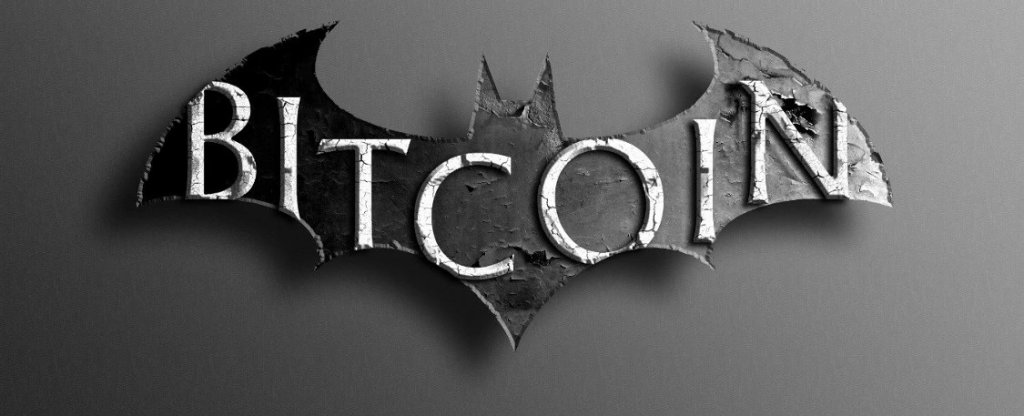
Money and value as mental constructs
This is an exploration of the philosophical and social reality that we refer to when we talk about money and value. First try to understand the concept of money better, the evolution of the economy and their impact on your personal life. Then apply that deeper understanding to blockchain and crypto currency, and to investing in your selection of projects.
What I would like to talk to you about is what “money” actually means. Guess what: it goes a little ways beyond being the “medium of exchange; a unit of account; a store of value” definition. It’s not a surprise that we’re gradually shifting to an “economy of attention”, if you understand what money really means, how capitalism naturally evolves and where money comes from as a historical and philosophical phenomenon.
I’m going to try and break this complex construct down, so you and I can both benefit from better understanding. I would love it if you’d think while you read and if you would provide me with pointers to improve my insights and this piece in the comments or otherwise.
The promise of “Face Value”, fulfilled
A few of you might be reading this because you have read or heard about my mystery novel, “Face Value”. In it, the protagonist gets very, very successful and wealthy partly because of a book that supposedly teaches all of the secrets about money, to help you get rich. In the story, that book is used as an ingredient for a thought experiment about the relationships between money, love, success, self-esteem and digital technology. In this current piece, I write down what that book would actually say, if it really did exist. An unspoken promise, fulfilled.
Now, I’m not saying I have all the answers. Hell no. But in many cases, asking the right questions is worth at least as much as the answers themselves. Also, you don’t have to take what I tell you here at “face value”: I am not a rich person or wealthy investor: I’m just a guy working (in tech, granted), paying rent and doing the side hustle thing trying to provide for my wife and kids and trying to improve life: having more free time to do what I want and become better at it.
I don’t have all the answers. But I’ve been asking myself and the world around me a lot of questions over the past 10–15 years. I needed to write this stuff down to try and make sense of it all. I’m hoping you’ll be able to benefit from this, as I hope that I can, too.
What we’ll cover
I’ll first talk about the history of money, which translates to what it means from a philosophical point of view. Then I’ll talk a little bit about how you and I personally experience money and value in daily life, today. And finally I’ll talk about what I think that means, and ask you to think about the same for your own life.
Then, together we’ll talk about how to turn these insights into value that we can monetize or otherwise benefit from.
Finally, almost as sort of an afterthought, we’ll talk a little bit about cryptocurrencies and blockchain; what those mean and where they come from, and what that means. And lastly, then, we’ll talk about how to turn these insights into value as well.
On the historical essence of money
Money, or what we call money, or what we mean when we talk about money, is first and foremost, and at its most essential, an idea. Comparable to Plato’s notion of ‘ideia’, it is formless and shapeless and essentially exists in thought, or mind. Money exists primarily as a construct in human minds; individually and possibly even more prominently, collectively/socially.
Money is the measure of belief that a thing holds value
Money is the human idea or construct that holds the belief that something (this could be a material object, an event, a person, organization or even another idea or complex of any of the above) holds value to the agent or thinker. Value here can be seen in the way that classical economists view it when they speak of “innate value” or “use-value” (as opposed to market value), and denotes how much a thing will help the agent satisfy his needs or attain his goals. Money is an idea and needs belief to function outside of the realm of ideas and mind.
Value for attaining goals and self-actualization
For humans, goals and needs are most easily understood if we think of them as following a certain hierarchy, often viewed as in the “Maslow hierarchy of needs”, which starts at a basic biological level of sustenance, clothes and safety/shelter — in other words; what is needed to survive and to procreate — and progresses toward the “higher levels” of social belonging, status, and ultimately self-expression and self-actualization.
(I would like to argue here that viewed from a standpoint of various theologies and at the same time quantum physics, the actual primordial drive or end goal of all (conscious) energy could well be self-expression and actualization (of potential), which would mean that the lower levels of Maslow’s pyramid hierarchy actually only exist in service to the uppermost level).
Money as a construct or idea with many symbolic representations
What you call “money” is the idea of how much something will aid you in meeting your goals and needs. It is a construct, an idea, much like the idea we denote by the word “pen”. A pen can be viewed to be represented symbolically in material reality by the physical object we use to write. But the concept “pen” does not need the physical object to exist.
Likewise, “money” can exist and has existed or does exist as merely an idea in someone’s (individual or collective/social) mind; as gold bullion, coins, notes, entries in a ledger or notebook or a handwritten IOU, as salt, swords, sea-shells, as a verbal agreement or promise, and virtually as ones and zeros or computer code. Back to the original ephemerality of its essence. An idea, changing from purely mental through physical towards the virtual.
Historical emergence of a shared idea of a unit of measure of perceived value
Many people will, when they think of money and its historical emergence, think of things like sea-shells or metal coins. What many people don’t realize is that one of the first documents that were ever written and retained throughout history was actually a now approximately 5,000 year old Mesopotamian clay tablet that denotes a financial transaction (and that the first name ever recorded in history was probably not the name of a king or high priest but rather that of a person who we would now call “accountant”).
The medium does not come before the idea. Money was a medium of exchange; a unit of account; a store of value precisely because it could be, because it was a mental construct. Denoted symbolically by dollars, yens, bitcoins, zeni’s or stripe marks on a clay tablet; doesn’t matter a bit. What matters is the shared idea of a unit of perceived value.
And that is precisely why money has changed so much over the course of history, and why it has taken so many different forms and why it has been connected to so many different concepts over the ages.
Power of belief backed by violence, gold, purchasing power
There is a reason we speak of “fiat” currency. Money means belief. As Daniel Jeffries writes on Hacker Noon here, money was historically backed by “the violence hack”; kings and nation states backed their own coin (gold, paper or digital fiat) by their military power. The military muscle of the ruling power was the end-of-the-day back-up that helped people believe in (the power of) money.
The violence hack, together with gold — all while gold standards and the coupling to gold were always fairly weak as rulers notoriously threw caution and fear of inflation out the window at the first problems that arose. And in the last five or six centuries, at least in the west, the power of or belief in a coin or currency has been coupled to the purchasing power of the economy, or the people within the society.
Purchasing power and credit as value in the unknown future
Backing the power of a currency by the people within the society or economy was made possible by the introduction (along with the invention of the brilliant financial hack that is fractional reserve banking, usually dated around 1400 AD) of modern debt and credit. This is another human construct or idea, which denotes the value something will have for the agent or thinker in the unknowable future.
Capitalism is in more ways than one, nothing more than a working model of a pyramid scheme.
This is why growth is so incredibly important to economists worldwide.
At present, a very large portion of the existing money in the global economy exists as some form of credit or debt, which is part of the reason the credit crunch of 2007–2008 was even possible to begin with.
The existence and prominence of debt is why money can also be viewed as societal credit: the amount of money (or credit) society gives you is a measure of how much value society expects you to contribute in the unknowable future. Think of this concept when you think about your student loan, mortgage, but also your salary, wage increases, or funding for your start-up and so on.
The fourth industrial revolution: changes
We live in an era that some call the fourth industrial revolution. The first two brought forth an economy driven by ownership of land and energy from muscle, and ended with an economy ruled by ownership of factories and machines, and energy from essentially the burning of fossil fuels. Purchasing power of the proletariat or general public and their connected need for employment were constant drivers.
The third industrial or information revolution made information or knowledge the closest thing to real money, and thinking machines the most valuable things to own. But things are changing rapidly now, at the start of the fourth industrial revolution, partly because of the emergence of abundant energy which is hard to place under ownership (e.g. solar or wind energy).
Moore’s Law, Keynes, and how capitalism was destined to render itself obsolete
The forces that have driven the world economy since the first industrial revolution are the constant battle or interplay between labor, capitalist owners competing for better prizes by continuously improving technology, and that technology itself. These forces are inherent to a capitalist economy and as predicted by Keynes himself they would also inherently render competition — one of the essential markers of a capitalist economy — useless.
The zero marginal point society
This would happen when we reached the point that technology made production of basic commodities and products so easy and so cheap that production costs and subsequently prices would reach a zero marginal point. Keynes in fact predicted Moore’s Law. And, indirectly, Keynes and Moore together predicted the technology-facilitated attention economy as one of the last stages of capitalism.
The attention economy
What all of this means for our current thought exercise is that we live in the end game of classical capitalism, and that it makes sense that, considering the near zero cost of information and soon enough energy, we are now fast moving toward an attention economy — with data as the new oil — and then soon after that, something completely different, a world which few of us can even imagine.
Attention — the next most important commodity
We again draw back on the concept of money, the life blood of the economy, as essentially a mental construct, to more easily see how “attention” could become the next most important commodity. If capitalism is dying, and if controlling the flow of information and attention are the smartest, most profitable things we can now do, and the winners are no longer those selling specific goods or services, we could expect to see an economic landscape that reflects just that.
Winning the end game by controlling the flow of information and attention
Google(Alphabet), Microsoft, AirBnB, Uber, and to a lesser extent Amazon and Apple and the success of such companies over the last decade or two are perfect testimonies to the changing of the tides. If energy, housing, commodity goods, foods, and basic services are becoming too cheap to produce to meaningfully profit from; the last bits of capitalist profits will be coming from controlling the flow of information and attention. These of course to be used to bring supply and demand together. And to ultimately make a profitable deal for both parties. But in our present economy, the attention traders are often the ones who make the most profit.
And ultimately, attention is a prerequisite for belief, which is needed to make a trade or earn money; it is the war that is going on right now and the reason why I don’t really want to be in marketing anymore, because it’s starting to feel fairly unethical and more so, almost completely devoid of purpose.
What does this mean for you and I, personally?
Let’s take a small step back and project, for a moment, the insights above on our personal daily lives and experiences. What does all of this mean in your and my lives?
As you may or may not know, the protagonist in my mystery novel, “Face Value” ends up at rock bottom at the start of the story. He starts getting more and more worried about money, success, status, and figures out along the arc of the story how all of these tie into his own feelings of self-worth, self-esteem, and into his love life, social and sex life. All the while trying to figure out who is helping whose life, and who is scamming who. “Angelo’s” findings aren’t a coincidence:
· Scientific evidence has and does point to a significant relationship between your financial status and your self-esteem and happiness until a threshold level of about 60,000 dollars/year.
· Social status and financial status — or success — are strongly connected, which is a no-brainer. But the two are in fact so interconnected that psychologists and other social scientists after hundreds upon hundreds of factor analyses now simply use ‘socioeconomic status’ or SES as a control factor in their studies.
· For men, it seems, the relationships are even stronger. The interaction of testosterone (male sex hormone) and cortisol (the human hormone most strongly related to stress) is associated with attained status in male executives.
· And males have been shown to generally be more sexually attractive to females when testosterone levels are higher and stress hormones lower.
It shouldn’t need explaining here that feelings of success elevate levels of testosterone in males, and that stress and its subsequent physical expression is mediated by financial status as well.
What does all of this have to do with money as a belief system?
Clearly, if money is a belief system and an idea first and foremost, the financial status someone has is going to have an effect on his or her beliefs about self, and an effect on his or her relationships. If you want to know more about how this can feel from a very personal standpoint, or want to learn more about money as a belief in the form of a thrilling mystery novel, read “Face Value” here.
How do the attention and platform economy tie in?
Numerous heinous effects of social and digital technology on our psychological and thus — from a holistic, body-and-mind perspective — also our physical health, have been reported. If you read “Face Value”, you will see from a very personal point of view how social media, digital technology and the culture they have allowed us to create, exacerbate the relationship between our beliefs surrounding money and value on the one hand, and our beliefs about ourselves and our relationships on the other. More about the effects of social media and technology on our relationships, can be found here. Is our biggest collective relationship secret that we all secretly spy on each other constantly?
Our attention spans, our ability to filter out what’s important and more true, and our natural instincts are all being high jacked by a system designed to wring the last bits of capitalist-defined value out of us. Until we turn around the beliefs that enable them. Until we start taking back control of our attention and other valuable resources, and the platforms and systems by which we manage, divide, and trade them.
How to get a grip on the balance: a four-layer plan
It is now time to change your financial belief system. First off: financial success, merit, happiness, all of it; they are not first and foremost a function of hard work, preferably in a full-time job, working for someone else. It is a function of your focused attention and your belief in something or someone, and other’s (and your own!) attention for and belief in you. That, combined with the incremental maximizing and exploring of your own limitless potential.
It is now time to really start decoupling the (hard) work that you do and the value you create, from your income. And the financial and administrative knowledge and skill you have from the money that flows out, and the financial stability of your household. Anything you can do to create long-lasting passive income, is fantastic. So:
First: Invest.
Investing means allocating attention and belief to something or someone. Invest in financial or other bits of value that are likely to grow and pay dividends. Invest in individuals or small companies with potential by helping them out in exchange for social evidence (adding to status) and a percentile of their profit for an X number of years. Or invest a small amount of money, if you have it to spare. Read on below to find out how to invest in cryptocurrencies and blockchain in a smart way.
Second: Add value, and ask for financial value in exchange.
Have confidence in yourself: you can and do always add value. Even at rock bottom level you will be able to do this. Remind yourself: you have been at rock bottom before. There were still ways you were adding value to the lives of others, even if only indirectly and deferred, through the lessons you learned in that period of your life. You are always adding value, as you live and breathe. Make this your mantra first. Then find out where and how you can best exchange that value for money in the market.
Third: don’t do your own taxes.
If you’re reading this I’m going to assume that, like me, you’re not a tax and financial administration buff. If that is indeed the case, pay someone to do your taxes and other financial administration. Use a mostly automated system, and draw in expertise from an expert. Make sure you do always understand and have insight into what’s going on.
Fourth: find ways to cut costs and people to share them with.
We are not alone in this conundrum. There are more and more people figuring out smart ways to live and thrive in this world. Find them. What extremely cheap ways to have a roof over your head, have electricity, warm water and sanitation, and food, are available, legal and possible near where you live? Do that. And make your financial life much more light on the side of necessary expenses. Dear reader; if you’re one of these people and have found great ways to cut costs, let me know in the comment section below!
Blockchain and cryptocurrency: how to invest in new belief systems
Now, more on what you likely came here for, and on what you kept on reading all the way down here for: how do cryptocurrencies add up in our newly defined system of “money as a value-belief system”? And how do we use these insights and our insights about the attention economy to our advantage by investing in crypto? The first layer in our four-layer plan, is to invest.
The new fiat or belief currency
These are the — in my view — most overlooked properties and advantages of blockchain technologies and cryptocurrencies such as bitcoin. The most important thing that Satoshi (pseudonym) gave us was a new way to construct belief in a currency. A by all means meaningless virtual chain of blocks made up of code, that we can decide to attribute value to. That has a wonderful but ultimately impossibly waterproof way of securing transactions, identities, and stores of value. Just as any other system.
What blockchain or cryptography-based coins give us is a new way to back the belief in a currency, or our belief in an idea of money or value. And that new way is our belief in the technology — or in other words, in human ingenuity. Whether you choose to believe in the standalone genius of Satoshi or the standing-on-the-shoulders-of-giants-principle which makes all human knowledge inherently our collective heritage. The main point is: we can choose to believe in it.
*What a wonderful surprise to see one of my favorite thinkers, Nassim Nicholas Taleb, call Bitcoin — and by extension any broadly accepted cryptocurrency — the first “organic currency”. That’s another way to say that we as individuals and as society have the freedom to choose to believe in it.
The disruption of the platform monopolies
And what blockchain technology is also giving rise to — apart from the disruption of the banking/government monopoly over currency — is the possibility to disrupt the monopolies of the gatekeepers who now control the flow of information and attention. The war for our attention is going to be the Blockchain revolution soon, thanks to many an Ethereum Dapp, or social Dapps like Steem.it or Synereo. Any or all of which will be successful by the measure of how many people place how much of their belief in them, as well.
The current model is clearly coming to an end. How can we take an advance on the future, Now?
How to get started with investing in blockchain projects and cryptocurrencies
The first and foremost thing you should remember is this: investing money is a risky game and you should only invest what you can afford to lose.
Also, I have worked in the tech industry and have written about technology developments for years now, and I also happen to know a little bit about finance. I’ve been compulsively reading about blockchain technology for a little over a year now, as a personal interest and as a tech writer (blockchain article by yours truly from about a year ago, in Dutch). But I’m no crypto or blockchain expert, nor am I by any means what you would call an experienced trader. Trade with your own mind, and at your own risk.
Second: I believe, personally and from what I gather from my reading and talking to smart people in my network, that you should know what it is you are investing in. Assuming you are going to take care of the trading and picking of assets yourself. And even when you rather let someone else handle the trading for you. Either way: read up on blockchain, DLT and crypto. Get a grip on the technology and philosophy.
Blockchain and cryptocurrency sources and news
If you don’t really understand what a ‘blockchain’ is, get a head start with this video:
https://www.youtube.com/watch?v=NTNQMKB0A3A
And read “The blockchain Revolution” by Tapscott & Tapscott which offers a great introduction. There are a ton of sources writing a lot about blockchain and cryptocurrencies, and not everybody really knows what they’re talking about: learn the lingo and understand the basic concepts so you’ll understand what to look out for and be aware of. I like Coindesk and NewsBTC a lot. Coindesk has a really great article here exploring the value of a crypto asset. “What is a crypto asset really worth”?
Recently I started following the Hackernoon channel on Medium, which features articles about a variety of technological topics and a lot of insightful articles about crypto and blockchain projects.
Which cryptocurrencies and blockchains should you invest in?
Should you or should you not invest in bitcoin? Or in any of the other 1500 or so cryptocurrencies and blockchain projects out there? I can’t tell you what to do, or what will work best. I can only tell you what I’ve gathered, what seems smart and fitting for me and why.
First: invest in a diversified portfolio
This one seemed like a no-brainer for me when I first started thinking a little more seriously about investing in cryptocurrencies. But it’s also been corroborated by the fact that most of the sources I read or speak to either take diversification as a given, or outright state it as an integral part of their strategy.
Kenny Li at MIT has an interesting article for all of us - beginners - here, where he demonstrates how investing in a diversified portfolio of crypto assets, got him a return of 260% vs. the 47% he would have gotten over the same period investing in Bitcoin alone. That deserves some notice, doesn’t it?
Second: decide whether you’re in it for the fast cash or for a brave new world
Personally for me, blockchain technology is truly a potential gamechanger for the world, and it seems impossible to predict now what effects the technology might have in the world over the next 20 or 30 years. Imagine trying to predict Uber or SnapChat after reading about e-mail mid 1980’s. Blockchain has the same potential as the Internet protocol had, to completely change and disrupt the world as we know it. Especially when combined with human ingenuity and with other emergent technologies like solar energy, AI, IoT and so on.
For me, investing in blockchain is putting my belief toward creating a better life for myself and my family, and toward helping create a better future.
“The best way to predict the future is to create it” — Abraham Lincoln
This is why I would rather not invest in Bitcoin, for instance. Not only because Bitcoin is the poster child for cryptocurrencies, receiving all of the madness and hype attention and the volatility that comes with it. Or because it was the first mover and historically, first movers always have a tendency to be outflanked and out-innovated by the second and third generation of the same essential idea. It’s because Bitcoin has a massive design flaw by way of the computing resources it requires to operate, making it a massively non-environmentally friendly product.
*Note: this could be mitigated by the roll-out of the Lightning network.
My view that blockchain can be used to make the world a better place is also the reason I am a little bit infatuated with the concept behind Synereo, which at the time of writing has a fairly small market cap and whose “AMP” coin currently holds very little value compared to BTC (Bitcoin) or USD, or even STEEM. Synereo is designed with the specific aim to turn around the platform oligarchy at least as far as social media and content creation are concerned (think music, photography, art, but also stupid yet funny social posts with cats in them). More on Synereo, later.
Finally, I believe investing in assets that have a serious chance of delivering actual utility value aside from value in trading, is the smartest, soundest strategy for the long run. These have the best shot of being around after the cryptocurrency “bubble” reaches its historic peak, and inevitably bursts.
Crypto and blockchain assets I want to invest in in 2018
So, without further ado: the distributed ledger assets I want to use to start experimenting with investing in 2018. I’ve listed them here in order of my preference for each, based on my expectation for them to yield high returns and be relatively stable in the long term; the idea behind the project or asset and what that means I’m putting my faith into; the stability of the product as far as I can understand; the strength and stability of their team and surrounding community and/or ecosystem, and their current (January 2018) market cap.
1. Ethereum (ETH) “The blockchain app platform” and the second biggest cryptocurrency by market cap. Ethereum has the most utility value out of the three best known coins in the market. That’s because Ethereum was the first cryptocurrency that was built and that gained traction, which allowed the blockchain to be programmed, next to simply being able to trade value on it (vis-à-vis Bitcoin). It’s the smart contract platform. It’s the project with the broadest active developer community around it right now, and the platform on which most actually useful and usable applications of the blockchain or distributed ledger protocol are being developed. See their Dapp (Distributed App) library to get an idea of the insane amount of applications being built on the protocol.
It’s like Nicolas Cole writes: “When people buy into Ethereum, they are buying into the entire race itself — and all the horses, all the teams, all the companies building on its technology. For every user gained, that’s another person sitting at the table saying, ‘I believe in this.’ “
2. Neo (NEO) — Basically China’s 2.0 version of Ethereum, founded on GitHub. Which is basically saying it’s the same type of coin plus development platform, only it’s smarter and more agile because it came after Ethereum and got to learn from both Bitcoin and ETH’s mistakes. Strong ecosystem of developers and advocates.
3. Cardano (ADA) — Possible Ethereum and NEO killer. It’s like Ethereum and NEO had a baby, and then genetically modified it with the help of the world’s smartest crypto, tech, business and science minds. All steps in the development of the new, not even fully functional blockchain and coin are peer reviewed as is standard procedure in academia. Cardano is what you would call ‘third generation’ and as such in some important ways, technologically miles ahead of its predecessors. Yet, the technology is one of the newest in the bunch, and is furthest away from proving its utility value. Very strong team and community.
4. Ripple (XRP) — I don’t like this one too much because it is centralized. The whole idea of a blockchain is that it’s not. In a way Ripple is the old world. But it’s also the old world moving into the new world with baby steps. Ripple is one of the few coins backed and approved by central governments, and as such has direct, high utility value for holders in Asia. Has, much as the above names, demonstrated strong growth over the past periods of time. Unlike most other names Ripple has a very strong strategy involving government and enterprise partnerships, which is paying clear financial dividends.
5. Synereo (AMP) — by far my favorite project, at the time of writing. The attention economy and social media are some areas that hold my specific interest, as a marketing strategist. Brave with its Basic Attention Token (BAT) and Steemit are contenders often mentioned in this space. Synereo, my personal favorite, is “developing tools which allow content creators to easily monetize original works without having to turn their channels into advertisement real estate, while granting their followers the opportunity to be rewarded for getting the word out.”
Apart from this amazing idea for a project to change the world and our day-to-day online experience, Synereo has one of the best blockchain project whitepapers I’ve read so far. And it’s also the one with the most easily accessible, working, minimum viable product with its “WildSpark” application. The improved version of WildSpark which is set for rollout mid-February this year is going to be incredible for content creators and curators such as you and I.
*Note: Synereo is an initiative for a decentralized platform, but at the time of writing it isn’t a blockchain application per se. Synereo have recently announced they will be moving their platform to the Ethereum blockchain, soon.
**Oh, lest I forget: Synereo AMP’s are the only tokens I am aware of that you can invest in without forking over money! You earn AMP’s by simply creating a WildSpark account. And then by doing what you are already doing on social media!
6. IOTA (IOTA) — The Iota project is the first to bring together two of the most promising technologies of the past decade: IoT (Internet of Things) and blockchain. IOTA “enables companies to explore new business-to-business models by making every technological resource a potential service to be traded on an open market in real time, with no fees”. As JP Doomernik explains in the video below; the blockchain-powered Internet of Things can open up amazing new possibilities that can help save the planet and make each of our lives better.








